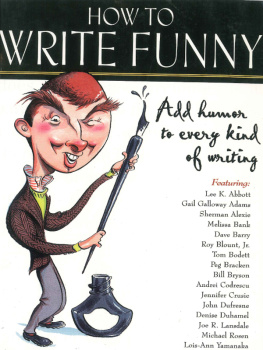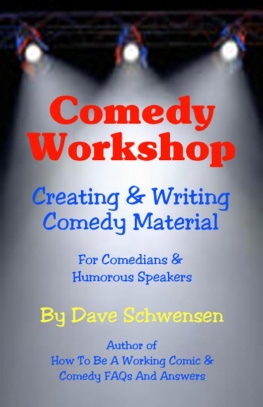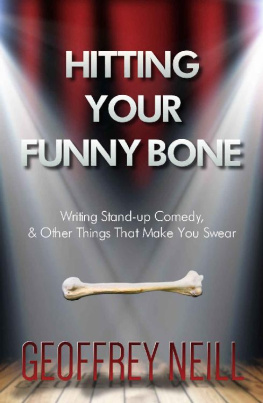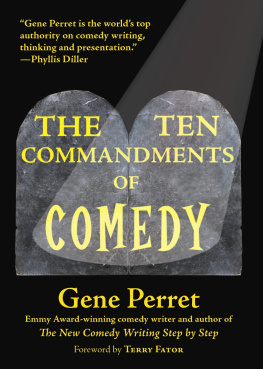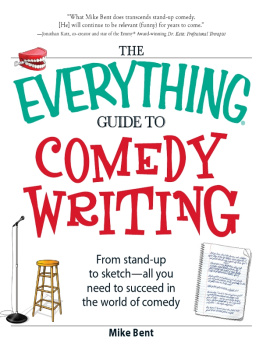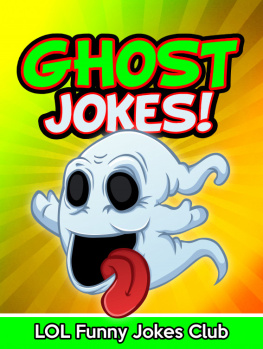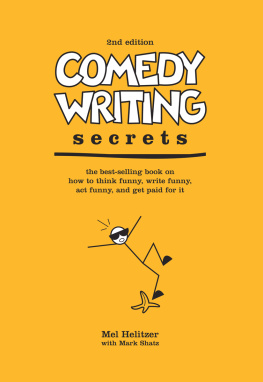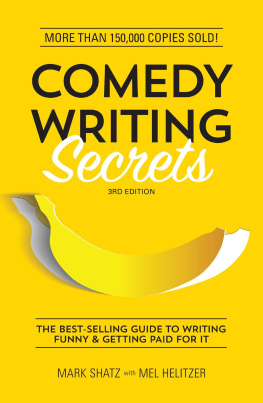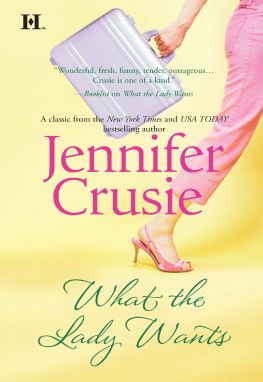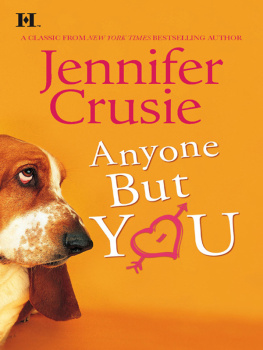How to Write
FUNNY
EDITED BY JOHN B. KACHUBA

www.writersdigest.com
How to Write Funny: Add Humor to Every Kind of Writing. 2001 by Writer's Digest Books. Manufactured in the United States of America. All rights reserved. No part of this took may be reproduced in any form or by any electronic or mechanical means including information storage and retrieval systems without permission in writing from the publisher, except by a reviewer, who may quote brief passages in a review. Published by Writer's Digest Books, an imprint of F&W Publications, Inc., 1507 Dana Ave., Cincinnati, OH 45207. (800) 289-0963. First edition.
Visit our Web site at http://www.writersdigest.com for information on more resources for writers.
To receive a free weekly e-mail newsletter delivering tips and updates about writing and about Writer's Digest products, register directly at our Web site at http://newsletters.fwpublications.com.
05 04 03 02 01 5 4 3 2 1
Library of Congress Cataloglng-in-Publication Data
How to write funny : add humor to every kind of writing / edited by John B. Kacbuba.
p. cm.
ISBN 1-58297-054-8 (pbk: alk. paper)
1. Wit and humorAuthorship. I. Kacbuba, John B.
PN6149.A88 H69 2001
808'.7dc21
2001026244
CIP
Editor: Brad Crawford
Interior designer: Sandy Conopeotis Kent
Cover designer: Andrea Short
Cover illustration: 2000 by Michael Witte
Production coordinator: Mark Griffin
ABOUT the EDITOR

John B. Kachuba is an editor, writer and journalist. He is the author of Why Is This Job Killing Me? His fiction has appeared in literary journals, and his nonfiction has appeared in Poets & Writers, Civil War Journal and other publications. He lives in Loveland, Ohio.
ACKNOWLEDGMENTS
Although it may seem like it at times, no writer works in a vacuum, and I need to recognize those folks who helped make this book happen. My thanks, first and always, to my. wife, Mary, for her patient support and encouragement and for helping to transcribe some of the author interviews. Second, to my friend Jack Heffron at F&W Publications, who is doing his best to keep this writer out of the poorhouse. To Brad Crawford for producing such a great-looking book. To all the wonderful writers who so generously contributed their experiences to the book and finally, thanks to my writer pals at The Establishment for teaching me how to joke with the executioner just a little off the top, please.
TABLE of CONTENTS
BY JOHN B. KACHUBA
BY ROBIN HEMLEY
BY DAVID BOUCHIER
BY FRANK SENNETT
BY J. KEVIN WOLFE
BY JENNIFER CRUSIE
BY CONNIE WILLIS
BY JOSIP NOVAKOVICH
BY ESTHER M. FRIESNER
BY JENNIFER CRUSIE
BY DAVID A. FRYXELL
BY MELHELITZER
BY PATRICIA CASE
BY DINTY MOORE
BY DAVID EVANS
INTRODUCTION
When Jack Heffron at Writer's Digest Books asked me to edit How to Write Funny, I thought sure, why not? How hard could it be? I'm a funny guy, even when I'm sober.
I soon discovered that editing the book was a lot like herding cats. I found out that there were more ways to use humor in writing than I thought possible and that exactly how humor was written varied immensely from one writer to another. But my dilemma was a boon for you, because all these various ideas and thoughts, formerly running wild, have been corralled for you in this one book.
I also learned quickly just how subjective humor could be. Here's an example:
Two Uzbek shepherds meet in a bar. One says to the other, Hey, great hat! Where'd you get it?
From the People's Collective, the other says. Where did you get yours?
His friend looks him squarely in the eye and says, Kmart.
OK, me neither, but I'm told in Uzbekistan that this is a hoot.
All of the writers I interviewed for this book said their upbringing, their culture, their personal identitiesall subjective aspects of their characterplayed some role in the formation of their sense of humor. Their life experiences not only helped them define what they thought was funny but, in many cases, provided them the vehicles to deliver their humor to a larger audience through their writing.
As an example, the storytelling tradition of his people influenced Native American writer Sherman Alexie, but so did reruns of The Brady Bunch.
Growing up in Hawaii, Japanese-American writer Lois-Ann Yamanaka heard her elders talk story; that pidgin patois carries much of the humor in her novels.
Romanian-born Andrei Codrescu's humorous writings on the absurdity of our society could not have been written without his personal experiences coming of age in a repressive country.
Roy Blount Jr.'s southern gentility is evident in his subtle and self-effacing humor, while Joe R. Lansdale's east Texas roots come to life in his roughneck, low-lifeand humorouscharacters.
The other writers I interviewedLee K. Abbott, Melissa Bank, Tom Bodett, Peg Bracken, Bill Bryson and John Dufresnealso acknowledged that they drew from the well of their personal experiences to form their senses of humor.
What all this means is that each of us has life experiences that make us unique as writers and informs our writing. There are positive and negative experiences, encouraging and demoralizing ones, uplifting and depressing. Together, they make up our writing psyche, that intangible something that compels us to put pen to paper, or fingers to keyboard, and write. Somewhere among all those disparate parts, the glue holding it all together, is humor.
In other words, there is humor in all of us. Some of us may have to dig deep to find it, but it's there.
How to Write Funny tells you how you can find the humorous side of yourself and how you can inject that humor into your writing. This book will not teach you to be a stand-up comic or a joke writer for Leno or Letterman; that's not its purpose. Its purpose is to show you how to add humor to whatever you write, fiction or nonfiction, to make your writing better.
Ah yes, I was afraid you would ask that. It's not easy to define better, but here are some ways in which the writers in this book have used humor to improve their writing:
Some use humor to allow them to discuss painful or depressing subjects without directly inflicting that pain or depression upon their readers. The chuckle in the middle of such serious material is the written equivalent of whistling in the graveyard.
Some use humor to poke fun at the human condition and to establish a common bond with their readers, while others inject a bit of levity into characters or situations that are too grim, that may emotionally overburden their readers.
Some writers use a wise-guy kind of humor as a veneer to protect their own or their characters' weaknesses and vulnerabilities, while other writers say being humorous is simply who they are; they know no other way of writing.
In addition to these brand-new interviews, How to Write Funny contains informative articles from writers working in an eclectic mix of genresmainstream fiction, science fiction and fantasy, romance, children's, newspaper editing, and TV and radio scriptwriting. Together, they give you practical information, including handy tips and techniques, that will help you use humor more effectively in your writing. There are articles by David Bouchier, Patricia Case, Jennifer Crusie, David Evans, Esther M. Friesner, David A. Fryxell, Mel Helitzer, Robin Hemley, Dinty Moore, Josip Novakovich, Connie Willis and J. Kevin Wolfe. Plus, the workshop by Jennifer Crusie is a great hands-on exercise that will hone your humor-writing skills and maybe give you a few laughs as well.
Next page
